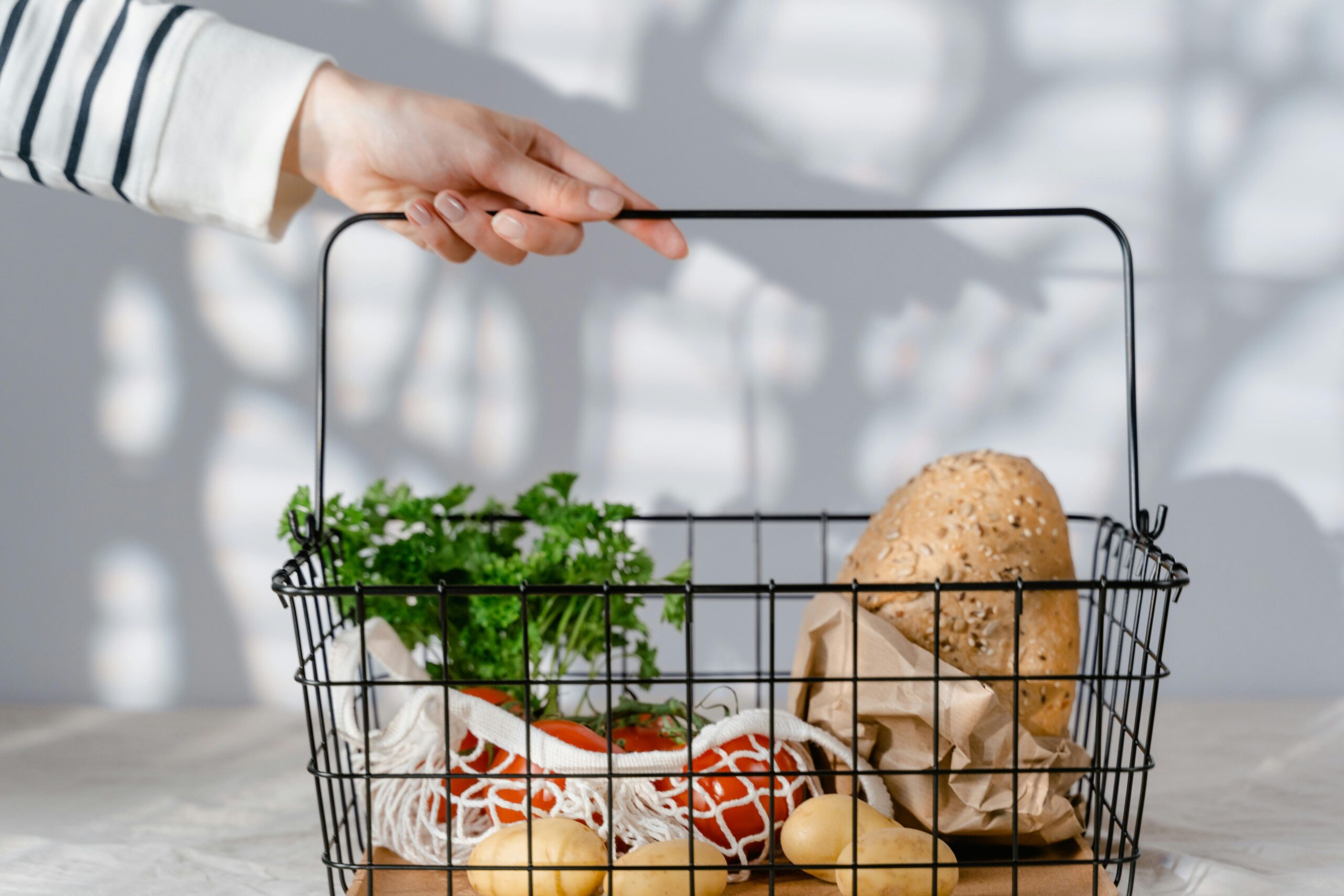Congratulations on your new home! Moving into a new space is an exciting adventure, and one of the first steps to settling in comfortably is stocking up your kitchen with essential groceries. In this guide, we’ll walk you through the process of making your first grocery list and shopping for your new home. Plus, we’ll ensure that every item on your list is free from allergens and/or meet your dietary restrictions.
Before You Shop
-
Assess Your Needs:
-
- Before you head to the grocery store, take a moment to assess your needs. Consider your cooking habits, dietary restrictions, and any specific items you may require for your household. Make a list of essentials to ensure you don’t forget anything.
-
Set a Budget:
-
- Setting a budget is crucial to avoid overspending during your grocery trip. Determine how much you’re willing to spend and stick to it as closely as possible.
-
Bring Reusable Bags:
-
- In an effort to reduce plastic waste, bring your own reusable shopping bags to carry your groceries.
-
Check for Coupons and Discounts:
-
- Before you go shopping, look for coupons and discounts for the items on your list. Many grocery stores offer apps or loyalty programs that can help you save money.
Essential Grocery List
Now, let’s dive into the items that should be on your essential grocery list for your new home. We’ll organize them into categories to make your shopping trip more manageable.
Pantry Staples:
- Rice
- Pasta
- Canned Tomatoes
- Canned Beans
- Cooking Oil
- Salt and Pepper
- Spices
- Garlic powder, cayenne powder, and oregano.
- Cereal or Oatmeal
- Tea or Coffee
- Honey or Maple Syrup
- Sugar
Refrigerator Essentials:
- Eggs
- Milk or Dairy-Free Alternatives
- Butter or Dairy-Free Spread
- Fresh Produce
- Depending on your preferences, include items like garlic, onions, lettuce, tomatoes, cucumbers, and bell peppers.
- Fruits
- Apples, bananas, and citrus fruits have a longer shelf life.
- Condiments
- Ketchup, mustard, mayonnaise, and salad dressings.
Freezer Essentials:
- Frozen Vegetables
- Frozen Proteins
- Chicken breasts, ground beef, or plant-based alternatives.
- Frozen Pizza
Beverages:
- Water
- Juice
Shopping Tips
- Stick to Your List:
- While it’s tempting to grab extra items, especially when you’re hungry, sticking to your list will help you stay on budget.
- Check Expiration Dates:
- Inspect the expiration dates on perishable items to ensure they’ll last until you plan to use them.
- Compare Prices:
- Compare prices, especially for items you buy regularly. Sometimes, buying in bulk can save you money in the long run.
- Consider Store Brands:
- Store-brand or generic products are often more budget-friendly and of good quality.
- Read Labels Carefully:
- Since you have allergies or dietary restrictions, it’s crucial to read food labels to ensure they don’t contain tree nuts, peanuts, or soy ingredients. Look for allergy warnings.
Meal Planning
Now that your kitchen is well-stocked, consider meal planning. Planning your meals for the week can help you make the most of your groceries and reduce food waste. Plus, it can make weeknight dinners more manageable.
Meal Planning Tips:
- Create a Weekly Menu: Plan your meals for the week, including breakfast, lunch, and dinner.
- Check What You Have: Before you start planning, take a look at what’s in your pantry, refrigerator, and freezer to incorporate items you already have.
- Variety: Include a variety of proteins, vegetables, and grains in your meals.
- Leftovers: Plan for leftovers, which can be a convenient lunch option the next day.
- Prep in Advance: If you have time, consider prepping ingredients in advance, like chopping vegetables or marinating proteins.
Stocking your new home with essential groceries is a crucial step in creating a comfortable and functional living space. With a well-thought-out grocery list, a budget in mind, and attention to your dietary restrictions, you’ll be well-prepared to enjoy delicious meals and snacks in your new space. Happy shopping and happy homemaking!

